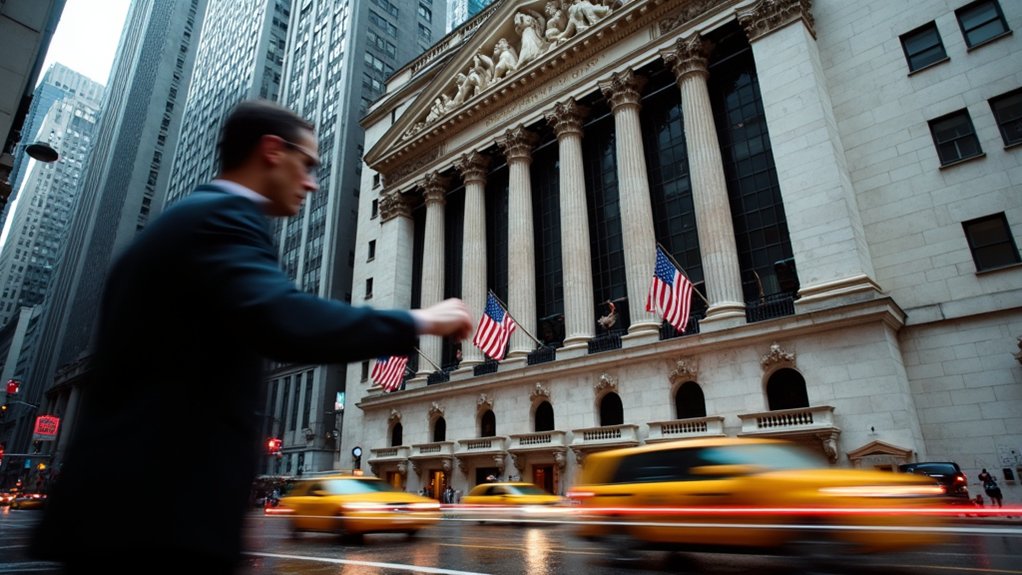Wall Street’s eyeing Trump’s 100-day economic rollercoaster with equal parts excitement and dread. The proposed 10% minimum tariff could generate $5.2 trillion over a decade, but threatens to spark trade wars. Meanwhile, massive education cuts and manufacturing shake-ups loom. Some sectors might boom from import substitution, while others crash from retaliatory tariffs. The market’s holding its breath – this high-stakes gamble could make millionaires or meltdowns.

While Trump’s ambitious 100-day agenda promises sweeping economic changes, the proposed policies carry both potential victories and glaring warning signs for the American public. The cornerstone of this economic overhaul? A whopping 10% minimum tariff on all U.S. imports, with some countries facing rates as high as 50%. Talk about playing hardball.
These tariffs aren’t small potatoes – we’re looking at $5.2 trillion in revenue over ten years, $16.4 trillion over thirty. But here’s the kicker: total imports are expected to nosedive by $6.9 trillion in the next decade. The U.S. has historically maintained a 2.5% vehicle tariff while other nations like the EU and India impose much higher rates. Sure, domestic manufacturing might get a temporary sugar rush from import substitution, but there’s a catch. Those pesky trade partners might just slap retaliatory tariffs right back.
The reindustrialization push sounds great on paper. More American factories, expanded defense production, new workforce development programs. But someone’s got to foot the bill. Project 2025’s proposals read like a greatest hits album of controversial cuts. Slash education funding by $11 billion? Check. Remove 72,000 teachers from classrooms? You bet. Cut English Language Acquisition programs affecting 5.5 million students? That’s in there too. Experts recommend maintaining a balanced portfolio to protect against such policy-driven market volatility.
Meanwhile, Wall Street‘s watching this high-stakes poker game with bated breath. The proposed tax cuts for the wealthy and elimination of anti-tax cheat programs have raised more than a few eyebrows. And let’s not forget about those capital inflows – they’re expected to take a hit, potentially throwing a wrench in investment plans.
Bottom line? This 100-day agenda is like a rollercoaster – thrilling for some, terrifying for others, and guaranteed to make a few people sick.





